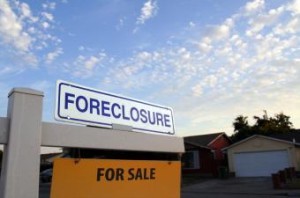
Ben Graboske
With the release of the latest Black Knight Mortgage Monitor Report this week, DS News sat down with Black Knight Financial Services’ Ben Graboske to discuss current foreclosure and delinquency trends found in the monitor and discover the factors behind the full monthly recovery in the national delinquency rate from the previous month as well as the lowest annual decline of pre-sale foreclosure inventory since 2014.
Graboske is EVP of Black Knight’s Data & Analytics division. In this role, he leads the division’s strategy, product, and technology development groups. In addition, Graboske also heads up Black Knight’s Innovation Laboratory and Decision Sciences.
Why is it unusual to see full recovery in the national delinquency rate in a month following a Sunday month-end?
It's typical for there to be a sizable significant partial recovery in the month following the month end on a Sunday, however, it is important to note that our borrowers impacted by Sunday month-ends are already making their payments towards the end of the month to begin with because they're due at the beginning of the month, and so if they're near the end then they're probably more on the distressed end of the spectrum. That suggests that these are borrowers who are struggling to meet their obligations and it just may take them a little bit longer to get back on track.
What factors contributed to August's delinquency rate rebound?
In addition to the typical rebound seen in the month following a Sunday month-end, we also see seasonal month-over-month decline in delinquency rates in the month of August. There's just a seasonal, natural trend in August where there's an improvement in delinquencies. There's the combination of coming back from the July spike with the normal seasonality and if you look at March through August and you take July out of the equation because it obviously is a spike, August is very much in line with those five months without July.
The inventory of foreclosed loans continued to decrease this month, do you see this trend changing in the future?
We've had 58 months of decline in foreclosure inventory. There are two components to that decline. One is that the newly funded loans, since the Great Recession, are of extremely pristine quality with good equity in the home and extremely high credit. The delinquency rate on newly originated loans is extremely low. Then on top of that the servicers are working through the legacy foreclosure inventory from the Great Recession and before. There's been enough time now to work through foreclosure protection policies and stipulations by local governments. If you look at the loans originated since the Great Recession, the newly minted ones are actually performing at or better than historic norms. We believe the trend will continue being reduced until that point where we've reached over all historical norms.
This marks the largest annual decline in pre-sale foreclosure inventory since 2014? What factors contributed to the decline?
I think it's really again those two major components, which is the new and the seasoned, but I think it's important to also note that March 2016 had the lowest one-month foreclosure start volume in ten years. That means there's very little new foreclosure starts coming into the bucket while the servicers are having great success in draining the bucket of all the legacy foreclosures. On top of that, July had the second lowest one-month foreclosure start volume.
Again, you also have increasing foreclosure completion rates and those rates are increasing for a variety of reasons. The first is servicers are getting more efficient at completing the process, and the second is some of the statutory limitations in various jurisdictions across the country have limitations on how long someone can remain in a home without making any payments. I think that those two factors are combining and that's why we're seeing this increasing foreclosure completion rates.
Additionally, for just over four years we have also seen monthly home price appreciation, an improving jobs market, people who have relatively high consumer confidence, and I think there's also a portion of the foreclosure inventory where borrowers can now actually start getting current. They're pulling, or resolving, their own foreclosure. I think it's kind of the perfect storm in a good way that is help bringing down this foreclosure inventory.
There is still some distance to go before full recovery is achieved. What timeline do you forecast for this full recovery?
We ran some scenarios and the scenarios focused on the recent reduction rates in 90 plus delinquent inventories. Based on those scenarios and recent rates those models point to about another year before foreclosure inventories normalize or mid-2017. Because there are always factors that can influence a month to the next, you moderate those rates and you get a little bit more conservative. Based off of that, our models point to 2018. These rates can change by geography based on various factors, so some portion of the country will have already recovered, but our models point to between mid-2017 and mid-2018 on a national basis the foreclosure inventory is fully recovered.
